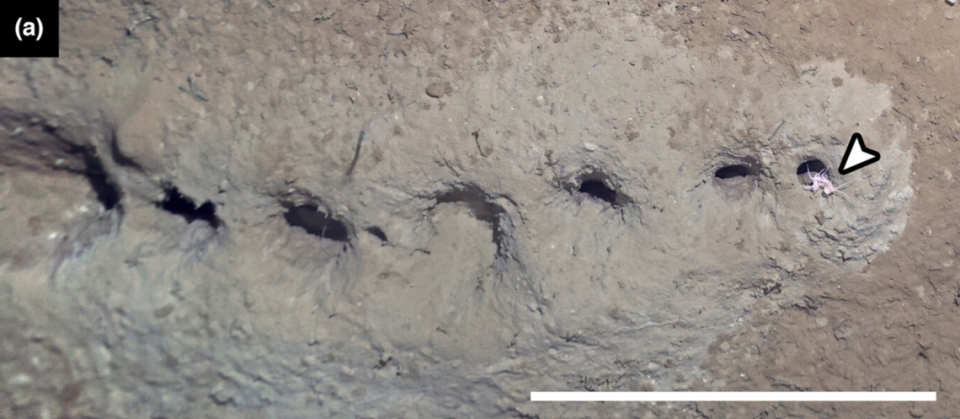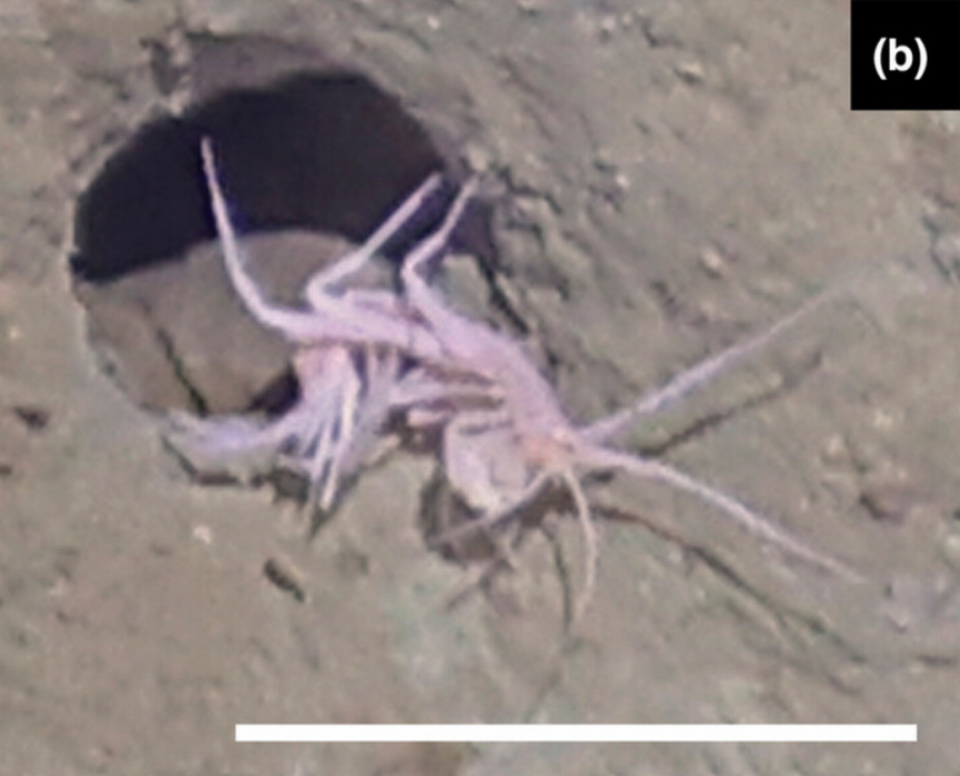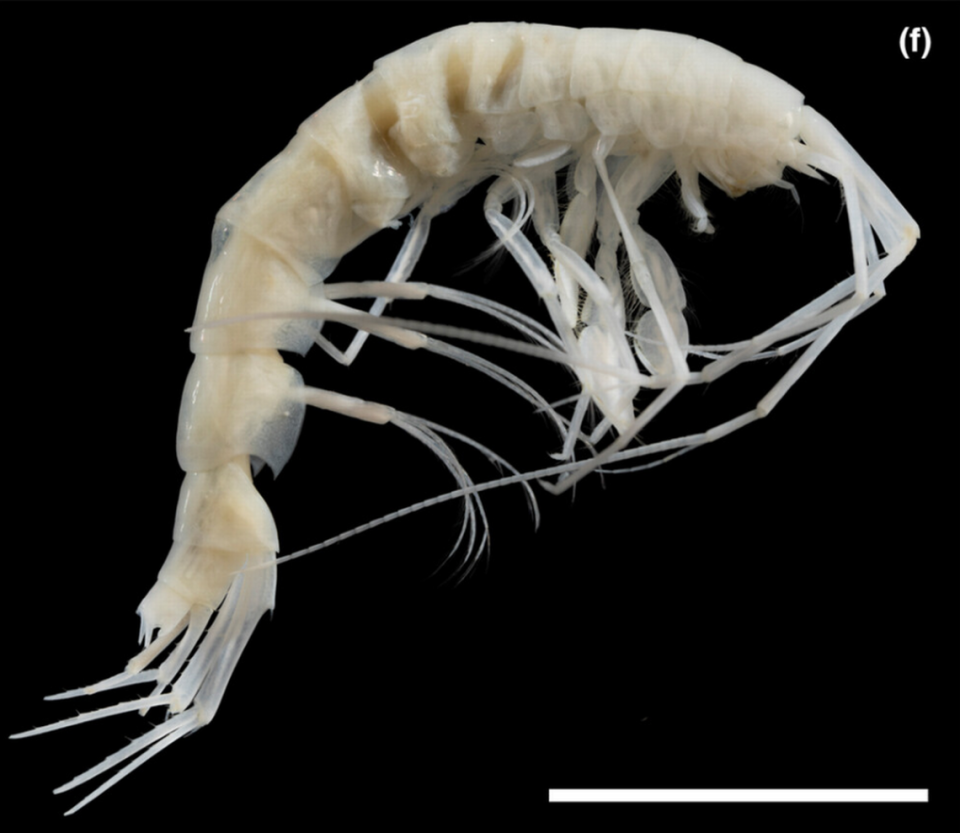Mysterious holes deep in the Bering Sea may finally have an explanation, study says
Deep below the chilly saltwater of the Bering Sea, strings of small holes dot the seafloor. The mysterious dots are scattered across the ground, decorations that look both natural and strange.
Similar holes have been found in the seafloor of the Mid-Atlantic Ridge and the Azores. But what are they? And what — or who — created these holes? Those questions had stumped experts.
A team of scientists surveying the Bering Sea noticed these structures and decided to investigate, according to a study published March 16 in the journal Ecology and Evolution. The team dropped a camera off their research boat and used it to photograph the holes and their surroundings.
The Bering Sea is located between Alaska and Russia. Researchers did not provide any more specifics on the location they studied.
Just over two miles down, the cameras photographed almost 200 strings of holes, the study said. Researchers noticed a pattern. The structures varied in size and in number of holes but consistently formed a rough line with small mounds of surrounding sediment.
They also noticed that the holes were connected by a small shaft-like tunnel that ran underneath the openings. Tunnels were not present in the mysterious holes found on the seafloor of other oceans.
‘They look almost human made.’ NOAA finds weird lines of holes in Mid-Atlantic floor
The underwater photographs showed something else too. The images captured almost 100 animals near the mysterious structures, the study said.
Most of these animals were too big to fit inside the “narrow passageway,” the study said. Other animals, such as worms and isopods, fit inside the structure but didn’t have the physical ability to dig the tunnel.
Using a process of elimination, researchers identified one photographed sea creature that could both dig and fit inside the structures: amphipods.

Amphipods are a type of crustacean that look like very tiny shrimp, photos show. Importantly, they have large claws used for burrowing, among other functions, the study said.
The deep-sea photographs showed an amphipod from the Maeridae family “probably in the act of carrying sediment” out of the structure, researchers said.

Based on this and other photographs of the small creature, the team concluded that these were burrows and the holes had a “practical function.” The amphipods could push sediment out of the holes as they dug, instead of carrying it all the way along the tunnel to one single opening, the study said.

The team theorized that the animals could be digging for food or creating a shelter where they would care for their young, the study said. These explanations will require further research to confirm.
Because of the depth of these multi-holed burrows and the presence of a tunnel, researchers described the Bering Sea structures as “sufficiently distinct” from the visually similar “pogo stick trails” found in the Mid-Atlantic Range. By extension, researchers said it was unlikely that the structures were formed the same way.
The Bering Sea may hold one less mystery, but the riddle remains for the unusual holes found at the bottom of other oceans.
200-year-old fish — not intended for eating — unearthed at iconic London site
Alligator having beach day surprises patrol looking for sea turtles, Texas photos show
‘Millions’ of bizarre blue blobs wash ashore on California beaches. What are they?

